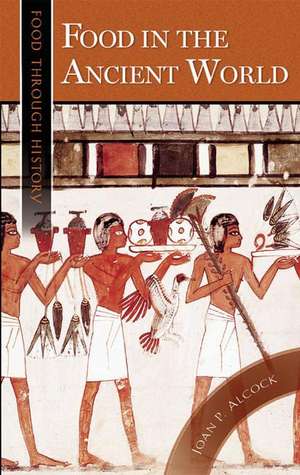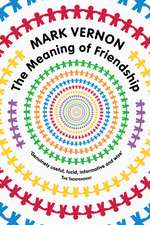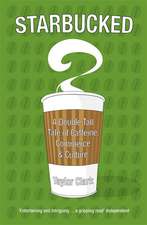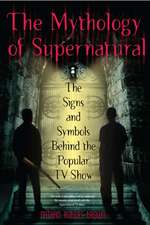Food in the Ancient World: Food through History
Autor Joan P. Alcocken Limba Engleză Hardback – 29 dec 2005 – vârsta până la 17 ani
Preț: 319.39 lei
Preț vechi: 554.42 lei
-42% Nou
Puncte Express: 479
Preț estimativ în valută:
61.12€ • 65.35$ • 50.96£
61.12€ • 65.35$ • 50.96£
Carte tipărită la comandă
Livrare economică 18 aprilie-02 mai
Preluare comenzi: 021 569.72.76
Specificații
ISBN-13: 9780313330032
ISBN-10: 0313330034
Pagini: 312
Dimensiuni: 156 x 235 x 29 mm
Greutate: 0.62 kg
Editura: Bloomsbury Publishing
Colecția Greenwood
Seria Food through History
Locul publicării:New York, United States
ISBN-10: 0313330034
Pagini: 312
Dimensiuni: 156 x 235 x 29 mm
Greutate: 0.62 kg
Editura: Bloomsbury Publishing
Colecția Greenwood
Seria Food through History
Locul publicării:New York, United States
Notă biografică
Joan P. Alcock is an archeologist and historian and an Honorary Fellow of London South Bank University and a Fellow of the Society of Antiquaries of London. She is the author of Life in Roman Britain (1996) and Food in Roman Britain (2001), among other works.
Cuprins
IntroductionClassical Authors MentionedAbbreviations for NotesTimelineHistorical OverviewFoodstuffFood Prparation and the Food ProfessionsFood by CivilizationEating HabitsConcepts of Diet and Nutrition
Recenzii
[A]n introduction to the food and eating habits of four ancient civilizations: the Greeks, Romans, Egyptians, and Celts. Alcock divides the book into six sections: historical overview, foodstuffs, food preparation and food professions, food by civilization, eating habits, and concepts of diet and nutrition. She also provides a time line and brief biographies of the classical authors mentioned in the book. The prose is clear and there are illustrations. Because this book is written as an introduction, it reads more like a series of encyclopedia entries than a cohesive narrative, but this makes it an easy source for locating general information on the culinary aspect of each civilization..[h]elpful to upper-level high-school students and lower-level undergraduates doing reports on ancient civilizations, and to libraries either starting or adding to a food history collection. General readers; lower- and upper-division undergraduates.
Concentrating on four civilizations-Egyptian, Greek, Roman, and Celtic-this fascinating study shows how food was grown, produced, and eaten from the beginnings of Egyptian pre-dynastic civilization until the end of the Roman Empire. Trade in spices and dealing with crop failures are just two topics that indicate how important food production has been in the history of societies. Maps and chapter bibliographies are included.
In her well-prepared contribution to the growing study of food in historical context, the UK author of Food in Roman Britain (2004) treats food cultivation and consumption by the ancient Roman, Egyptian, Greek, and Celt civilizations. Based on evidence including skeletal remains (some mummies show signs of obesity), Alcock reviews their agricultural practices, food preparation, eating and drinking habits and establishments, and concepts of diet and health. The book includes a timeline, list of the classical authors cited, maps, and food-related illustrations.
College-level collections with strong holdings in either ancient history or culinary history will want to take a close look at Food in the Ancient World.
Concentrating on four civilizations-Egyptian, Greek, Roman, and Celtic-this fascinating study shows how food was grown, produced, and eaten from the beginnings of Egyptian pre-dynastic civilization until the end of the Roman Empire. Trade in spices and dealing with crop failures are just two topics that indicate how important food production has been in the history of societies. Maps and chapter bibliographies are included.
In her well-prepared contribution to the growing study of food in historical context, the UK author of Food in Roman Britain (2004) treats food cultivation and consumption by the ancient Roman, Egyptian, Greek, and Celt civilizations. Based on evidence including skeletal remains (some mummies show signs of obesity), Alcock reviews their agricultural practices, food preparation, eating and drinking habits and establishments, and concepts of diet and health. The book includes a timeline, list of the classical authors cited, maps, and food-related illustrations.
College-level collections with strong holdings in either ancient history or culinary history will want to take a close look at Food in the Ancient World.











